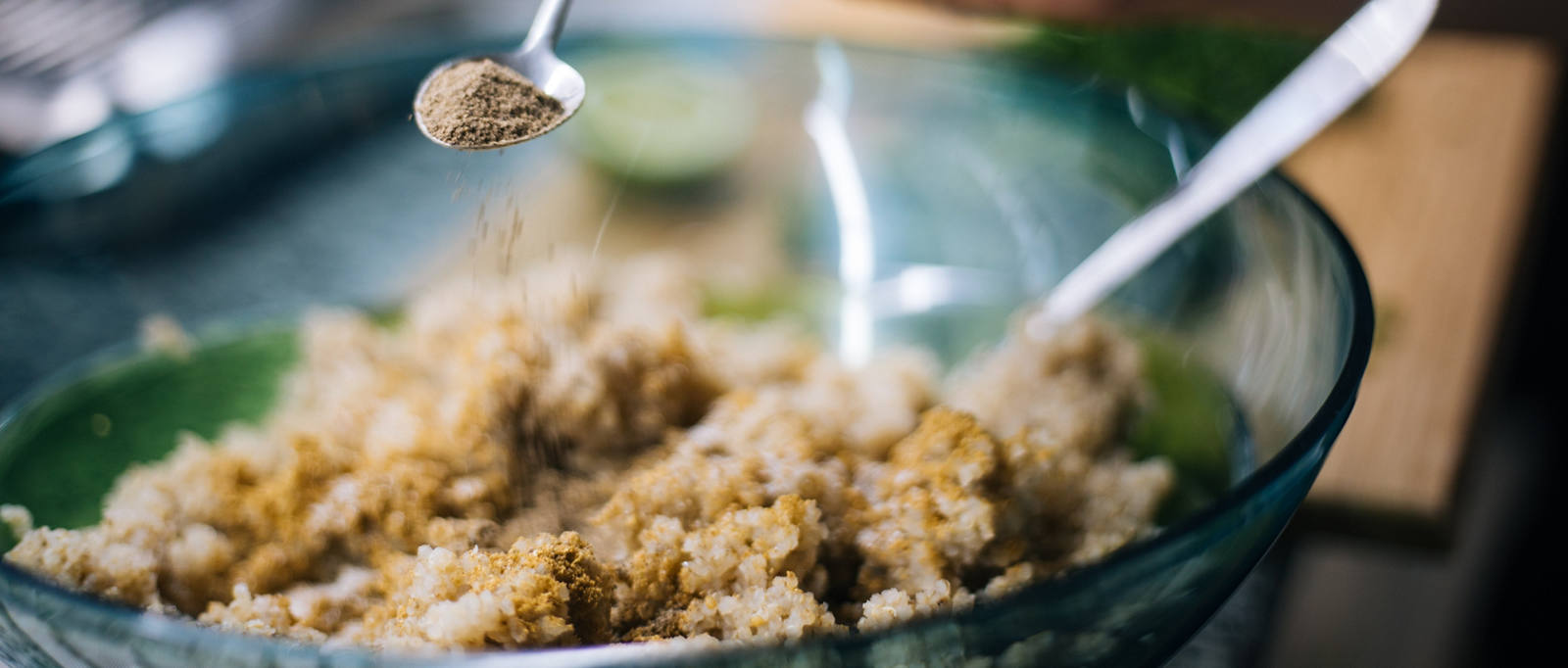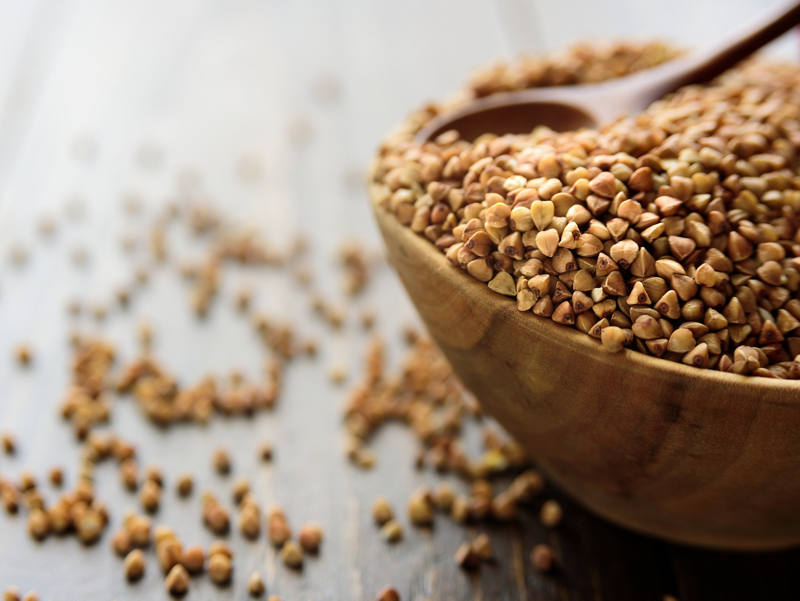The trend for pseudocereals: What is there in quinoa, buckwheat, etc.?

Pseudocereals such as quinoa, buckwheat and amaranth are increasingly being seen as the ideal alternative to traditional cereals. The grains are rich in proteins, valuable fatty acids and high-quality carbohydrates, and enable a sustainable diet, especially for allergy sufferers.
What are pseudocereals?
The small grains that are often found in muesli, baked goods or salads look like cereals but belong to a completely different plant family. Quinoa, buckwheat, amaranth and also lesser-known varieties such as millet, bulgur and couscous are known as pseudocereals. They bear this name because they’re often mistaken for conventional cereals such as wheat, barley and maize.
List of pseudocereal types
Pseudocereals are enjoying growing popularity in the modern diet due to their versatility and nutritional value. They form an excellent alternative for people with gluten intolerance and for anyone wanting a more varied diet.
| Pseudocereals | Origin |
Properties |
Use |
|---|---|---|---|
| Quinoa |
South America |
Gluten-free, rich in proteins and valuable amino acids |
As a side dish, in salads or as muesli |
| Amaranth |
Central and South America |
High in protein, lysine and fibre |
In soups, as a porridge or a side dish |
|
Buckwheat |
Asia |
Gluten-free, contains rutin, supports blood circulation |
As a flour in baked goods, as a porridge or as pasta |
| Millet |
Africa and Asia |
Rich in silicon, promotes bone health |
As a porridge or side dish or in baked goods |
| Bulgur |
Middle East |
Good source of fibre and protein |
In tabbouleh, salads or as a side dish |
| Couscous |
North Africa |
Easy to prepare, high in energy |
In salads, as a side dish or main course |
Are pseudocereals healthy?
Because pseudocereals provide our bodies with important nutrients, they’re undoubtedly very healthy. These gluten-free grains are rich in minerals, vitamins, complex carbohydrates and valuable fibre. Pseudocereals are also an excellent source of vegetable proteins and contain a high proportion of polyunsaturated fatty acids.
Nutritious all-rounder for a balanced diet
The large amount of amino acids and the fact that many pseudocereals are alkaline promote a balanced diet and help regulate the body’s pH levels. Due to their low carbohydrate content and high nutrient density, pseudocereals are also excellent components of a low-carb diet. All this makes them ideal for a vegan diet and for meeting the nutritional requirements of endurance athletes.
Nutritional value comparisons of pseudocereals
Nutritional value per 100g
Amaranth
- Energy (Kcal): 385
- Carbohydrates: 66g
- Protein: 14g
- Fat: 7g
- Fibre: 9g
- Minerals: Phosphorus, potassium, magnesium, calcium, sulphur, chloride, sodium
- Vitamins: B3, C, B5, B6, B2, E, B1, folic acid, B7
Nutritional value per 100g
Quinoa
- Energy (Kcal): 355
- Carbohydrates: 62g
- Protein: 12g
- Fat: 6g
- Fibre: 7g
- Minerals: Phosphorus, potassium, magnesium, chloride, sulphur, calcium, sodium
- Vitamins: C, B3, B5, B1, B6, E, B9, B2, folic acid, B7
Nutritional value per 100g
Buckwheat
- Energy (Kcal): 370
- Carbohydrates: 71g
- Protein: 12g
- Fat: 2g
- Fibre: 10g
- Minerals: Zinc, manganese, copper, potassium, phosphorus, magnesium, calcium, iron, sodium
- Vitamins: B5, B3, E, B6, B1, B2, folic acid
Nutritional value per 100g
Conventional cereals
- Energy (Kcal): 130
- Carbohydrates: 27g
- Protein: 3.5g
- Fat: 0.5g
- Fibre: 2g
- Minerals: Varies according to grain type
- Vitamins: Varies according to grain type
Amaranth – power from the tropics
Amaranth is a pseudocereal that can be put to many uses. Besides its versatility, many people appreciate its gluten-free properties and health-promoting substances such as omega-3 fatty acids. In the kitchen, the grains can be cooked to a porridge-like consistency that’s ideal as a filling for peppers or aubergines, an ingredient in stews, or as a nutritious breakfast with yoghurt and fruit. Young amaranth leaves can also be prepared like spinach.
Help for digestion and the brain
Originally from Central and South America, amaranth was already known to the Incas and Aztecs as a powerful grain that boosts mental and physical performance and can even delay the ageing process. Amaranth is rich in lecithin, which is beneficial to digestion as well as to the brain and nerve tissue. It’s also an excellent source of all important amino acids, including the valuable lysine.
Quinoa – the trending grain from the Andes
Quinoa, originally a staple food of the Andean peoples in South America, has established itself across the world as a health food and nutritious alternative to cereals. It’s excellent as a porridge, as an ingredient in bowl recipes or soups, and can also be used as a gluten-free substitute for rice.
Protein-rich pseudocereal
The pseudocereal quinoa is not only gluten-free, but also particularly rich in nutrients. It contains a high concentration of minerals such as manganese and copper, which protect red blood cells, as well as magnesium, which is said to be effective against migraines. Quinoa is also rich in high-quality vegetable proteins and healthy fibre. It provides all nine essential amino acids, including a significant amount of lysine, which strengthens muscle and connective tissue and can inhibit the growth of cancer cells.
Rich in unsaturated fatty acids
The unsaturated fatty acids in quinoa help to prevent inflammation and disease. Low in calories and with few – but healthy – carbohydrates (around 60 grams of carbohydrates per 100 grams of quinoa), it’s also useful for weight management and blood sugar control, making it an excellent option for diet plans and especially for losing weight.
Buckwheat – native pseudocereal
Buckwheat is a native and gluten-free alternative to conventional cereals such as oats and wheat and is very popular in wholefood cooking due to its nutty, slightly bitter flavour. It originally comes from Central and East Asia and found its way to Europe in the Middle Ages. Available in the form of sprouts, whole grains, semolina, flakes or flour, buckwheat can be used in a variety of ways.
Buckwheat is good for blood sugar levels
Buckwheat benefits our health in a number of ways. Unlike “real” wheat, which contains lectins that can increase the risk of thrombosis, strokes and heart attacks, buckwheat is free from these proteins. Instead, it contains chiro-inositol, which regulates blood sugar levels and is particularly beneficial for diabetics or people with elevated blood sugar levels.
Lowers blood pressure
In addition, the rutin contained in buckwheat lowers blood pressure and can therefore help prevent varicose veins and haemorrhoids. Buckwheat also contains lecithin which plays a role in regulating cholesterol levels and could even have a preventative effect on mental disorders such as depression.
Tannins can hinder nutrient absorption
Amaranth and other pseudocereals such as millet contain certain tannins that can bind vitamins and minerals. This property can make it more difficult for the body to absorb important nutrients. Buckwheat can also be a cause for concern due to its husk, as there are cases in which eating the husk can promote skin sensitivities. For this reason, commercially available products are usually sold hulled.
Allergic reactions
There are rare cases in which other ingredients, such as cereal protein, can trigger allergic reactions. It’s therefore important to be aware of the possible drawbacks and to choose and prepare the pseudocereal carefully. Despite these precautions, amaranth, quinoa, buckwheat et al offer many health benefits that make pseudocereals a valuable addition to a balanced diet.
Recipes with pseudocereals
Not only are pseudocereals versatile and rich in nutrients, they’re also exciting to use in the kitchen. The following recipes will show you how, in many ways, these healthy grains can outclass traditional cereals.
Quinoa salad with avocado and cherry tomatoes
- Cook 1 cup of quinoa according to packet instructions.
- Mix the cooked quinoa with a sliced avocado, a handful of halved cherry tomatoes, fresh coriander and a dressing of lime juice, olive oil, salt and pepper.
Amaranth porridge with berries and nuts
- Cook 1 cup of amaranth in 3 cups of water or milk until the mixture thickens.
- Serve the porridge with fresh berries and a selection of nuts for a nutritious start to the day.
Buckwheat pancakes
- Prepare a batter using buckwheat flour, milk, an egg and a pinch of salt.
- Bake thin pancakes and serve with honey, maple syrup or a savoury filling of your choice.



